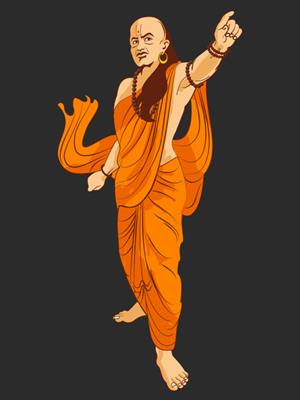
PUMPA - SMART LEARNING
எங்கள் ஆசிரியர்களுடன் 1-ஆன்-1 ஆலோசனை நேரத்தைப் பெறுங்கள். டாப்பர் ஆவதற்கு நாங்கள் பயிற்சி அளிப்போம்
Book Free DemoThe Beginning of the Mauryan empire:
Post the decline of the Magadha Empire under the rule of the Nanda dynasty, which was the last great dynasty of Magadha, the reigns of Pataliputra came under the throne of Mauryan Kings.
Chanakya had a strained relationship with the rulers of the Nanda dynasty; as a result of that bitter relation, he promised to uproot the Nanda dynasty from the Indian Soil.
Chanakya: Also known as Kautilya or Vishnugupta ,wrote a book on administration named “Arthasastra”. He was also considered as the guru of Mauryan king “Chandra Gupta”.
Chandragupta Maurya established the Mauryan empire in the year 321 BC after defeating the last Nanda ruler.
The political unification of India was achieved for the first time under the rule of Mauryan kings.
1. Chandragupta Maurya:
He began his rule after defeating and uprooting the Nanda dynasty with the help of Chanakya, who served as a chief tactician and minister in Chandragupta’s court.

Chandragupta, who was fascinated with the conquests of Alexander, wanted to emulate him by capturing many regions and expanding his territory.
After Alexander's death, Chandragupta had the idea of invading the “North-West” of India and Asia, which was under the control of Seleucus Nicator, the military general of Alexander.
Megasthanese: He was the ambassador of Seleucus Nicator who wrote a book named “Indica”, which speaks about the society and Political realms of the Maurya’s.
Chandragupta’s administration was highly centralised as he had a vast army comprising of infantry, Cavalry and the Elephant force.
He invaded distant lands of Afghanistan and Baluchistan and won over them. He did not capture only parts of South India and the Northeast.
He was an ardent follower of Jainism, who in his later days stepped down from the throne and embarked on journeys to distant lands with Jain monks and died in Sharavana Belagola.
2. Bindusara:
Bindusara was the son of Chandragupta Maurya who ascended the throne after his father. He had strong ties with the Greeks during his reign.
He extended the empire and went on to conquer 16 states of the Indian Peninsula. Only the Kalinga and South Indian states were out of his rule.
Amitrochates: This was the name given to Bindusara by the Greek rulers with whom he had close contact. This name means “The Slayer of Enemies”.
3. Ashoka:
He was considered the greatest among the Mauryan rulers, who took the throne in 268 BC, after the death of his father Bindusara.
The independence of Kalinga irked Ashoka, which provoked him to wage war on the kingdom. There was a large-scale massacre and slaughter during the Kalinga war, which affected Ashoka.
Kalinga: The Kingdom of Kalinga is present in modern-day Odisha. The Kalinga war by Ashoka was the only war waged by the Mauryan ruler.
Ashoka became a follower of Buddhism under the influence of “Upagupta” a Buddhist monk. He started to preach the ideals of “Dhamma” or Truth in Pali language, which the Buddhists widely used.

King Ashoka
He followed the policy of religious tolerance and cultural conquest. His Dhamma was a code of conduct that his followers followed.
Ashoka: He was the first king to communicate his ideas through inscriptions, as he had carved 33 edicts, including some minor and pillar edicts.
During his last days, Ashoka appointed his followers and his son Mahendra to spread the ideals of Dhamma in Sri Lanka, Southeast Asia, and other distant lands along with his daughter Sangamitra.